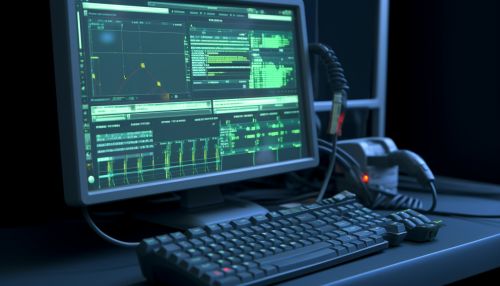Less
Introduction
In the realm of computer science, "less" is a terminal pager program on Unix, Windows, and Unix-like systems used to view (but not change) the contents of a text file one screen at a time. It is similar to more, but has the extended capability of allowing both forward and backward navigation through the file. The term "pager" stems from the more primitive Unix command more, which also displays the contents of a file on the terminal, one page at a time.


History and Development
The less command was first released in 1983 by Mark Nudelman, who was frustrated with the limitations of the more command. The more command, which was included in Version 3 Unix, only allowed forward navigation through a file. Nudelman wanted a program that could navigate backwards as well, and thus, less was born. The name "less" is a play on its predecessor's name, suggesting that "less is more".
Features and Usage
Less does not need to read the entire input file before starting, resulting in faster load times with large input files. It uses termcap (terminal capability) or terminfo databases to manipulate the terminal settings, making it highly portable across various systems.
The command syntax for less is:
less [options] file_name(s)
When viewing a file with less, the user can move backwards or forwards in the file, search for a string, and if the file is a file of other commands (a "shell script"), the user can execute those commands directly from less.
Advanced Features
Less has a vast array of command line options that can be used to customize its behavior. Some of these options include:
- `-N` : Display line numbers at the beginning of each line.
- `-x` : Set the tab stop positions.
- `-S` : Disable line wrapping.
- `-G` : Highlight only the last search string.
- `-X` : Leave file contents on screen when less exits.
In addition to these options, less also supports a number of commands within the program. These commands can be used to navigate through the file, search for a string, or manipulate the display.
Comparison with More
While less evolved from more, it has significantly more features. The most notable difference is that less allows backward movement in the file as well as forward movement. More only allows forward navigation.
Less also uses less memory than more. More loads the entire file into memory before displaying it, while less only reads the file as needed, making it more efficient with large files.
Influence and Legacy
The creation of less has had a significant impact on the development of other Unix and Linux utilities. Its ability to view files without first loading them into memory has been incorporated into several other utilities, such as vim and nano.
Less has also influenced the development of more advanced text processing tools, such as Perl and Python, which have incorporated similar navigation and search features.
